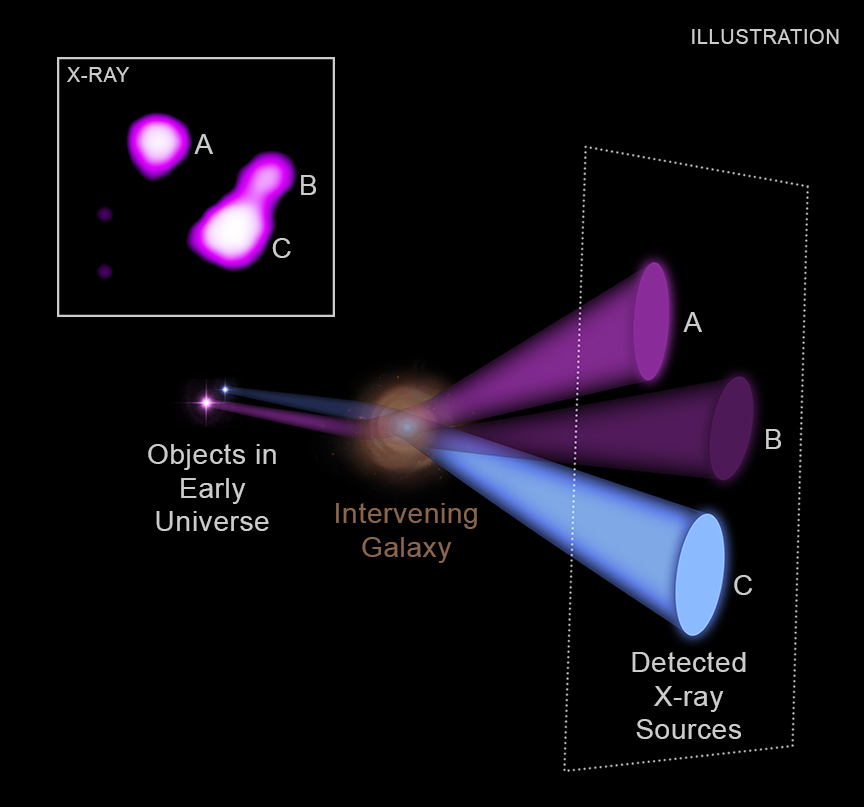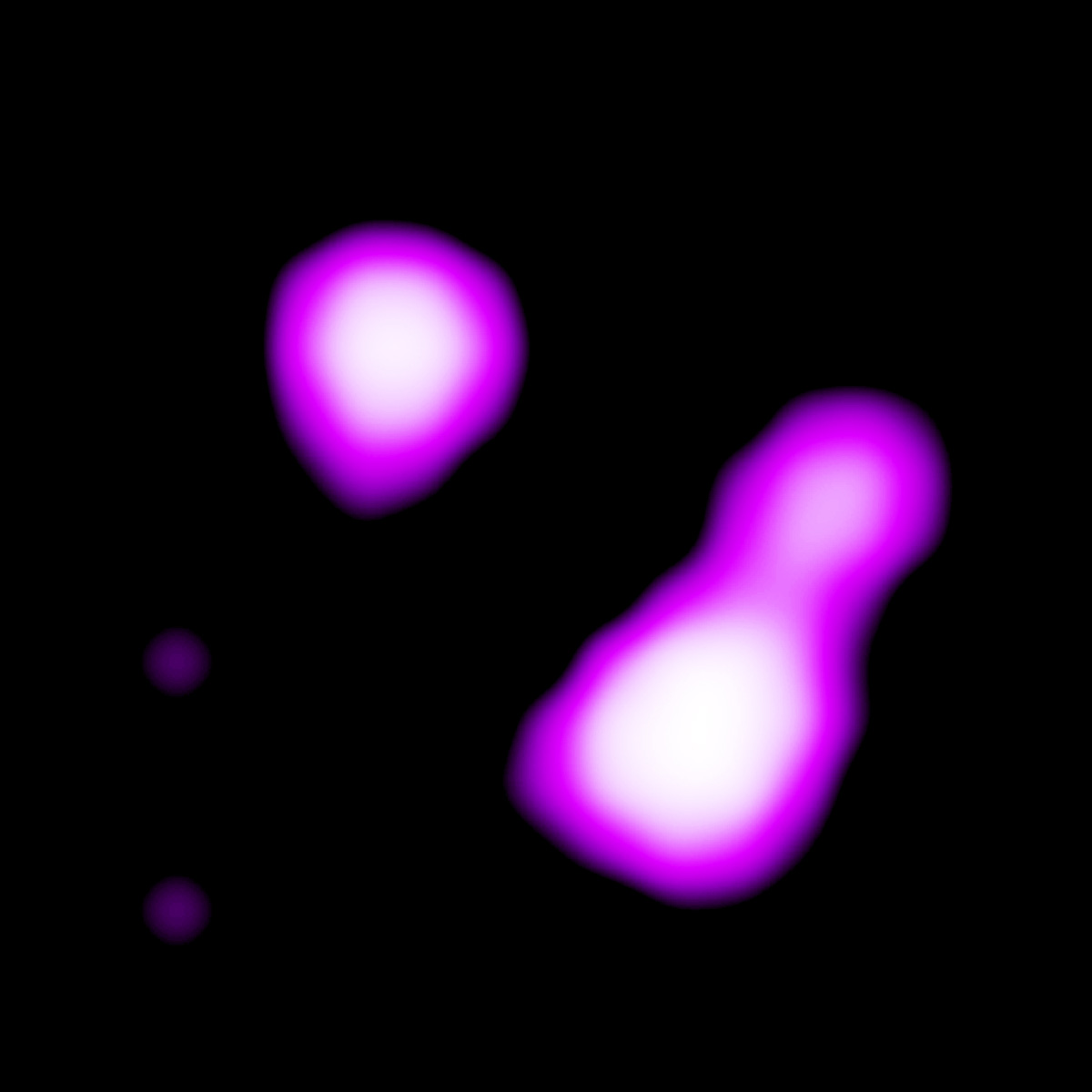Image List
-

Astronomers have used gravitational lensing to obtain an unprecedented look at a black hole system in the early Universe. An artist's illustration shows how the X-ray light from one of the objects on the left (purple) has been warped by the gravity of an intervening galaxy to produce two sources detected in the Chandra image (dashed square on the right). The light from the fainter object (blue) has been amplified by the galaxy to be as much as 300 times brighter than it would have been without the lensing. The Chandra X-ray image is also shown in the second figure. The two objects are either two growing supermassive black holes, or one black hole and a jet.
Illustration: NASA/CXC/M. Weiss; X-ray Image (inset): NASA/CXC/SAO/D. Schwartz et al. -

Chandra X-ray image of two growing supermassive black holes, or one black hole and a jet.
NASA/CXC/SAO/D. Schwartz et al.